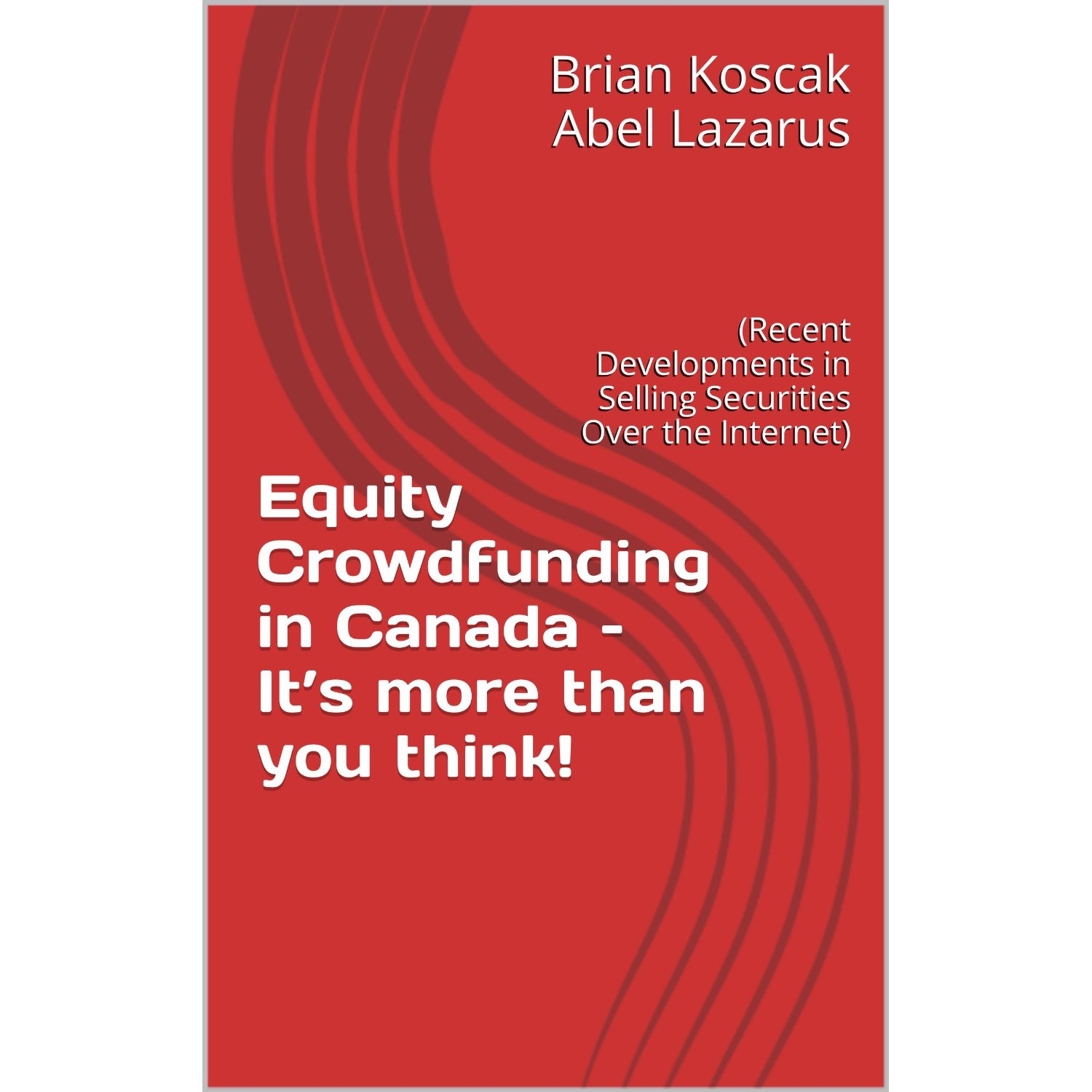De-Mystifying Minimum, Maximum, ‘Keep it All’ and ‘All or Nothing’ Offerings
By Brian Koscak and Alixe Cormick
Securities regulators and those active in the financial industry seem to have their own secret language. Sometimes it can be difficult for companies and investors to understand what it all means. In this article, we are going to de-mystify various terms which describe how much money a company can keep when crowdfunding. In particular, we are going to discuss what it means when a company says it is conducting a ‘minimum’, ‘maximum’, ‘keep it all’ or an ‘all or nothing’ offering.

all or nothing offering
The ‘minimum offering ‘or ‘target amount’ means the minimum amount of capital a company must raise in an offering before it can keep the money from investors and close the deal. Sometimes it is also called an ‘all-or-nothing’ campaign. A company must return any money received from investors if it does not raise the specified minimum amount. In that case, it is a failed offering. All-or-nothing offerings will typically involve an escrow account to hold investor funds until the end of a pre-defined offering period, such as 90 days, or the raising of the minimum or target amount. All or nothing campaigns are typically associated with non-equity crowdfunding but are also associated with private placement equity financings.
The term ‘maximum offering means the maximum amount of capital a company can raise under an offering. A maximum offering amount may be set by the company raising capital, its dealer, or by applicable securities law. If a company or a dealer has set the maximum offering amount, the parties may increase the maximum offering amount by consent. It is common in public offerings for a company to provide an ‘over-allotment option’ to its dealer. An over-allotment option gives the dealer the option to increase the maximum offering amount if the increased amount is for market-making and other purposes. Over-allotment options do not apply to a crowdfunding offerings. Existing and proposed securities laws in Canada and the United States set maximum offering amounts for companies raising capital under applicable equity crowdfunding exemptions.
A ‘keep-it-all’ or ‘flexible’ offering means the company receives all of the funds raised in the offering. There is no minimum offering amount that must be raised by the company to receive the funds. A keep it all or flexible offering makes sense when a company can utilize any amount of capital raised and has other sources of financing to advance its business. Investors should be cautious about a keep it all offering and should investigate whether a company really needs a certain amount of capital to allow a project to be successful or get the company to its next key milestone. The last thing an investor wants to do is invest in an underfunded project that should have a minimum offering amount.
 Why have minimum and maximum offerings?
Why have minimum and maximum offerings?
Setting a minimum and maximum offering amount requires management of a company to analyze what its financial needs are to reach its next key milestone or complete its business plan within defined timelines. This includes assessing what capital is on hand and what other financing sources are available to the company.
A well thought out minimum offering amount helps ensure a company will be able to fund its goals. A well thought out maximum offering amount ensures founders of the company are not unduly diluted at any point in the growth cycle of the company or are tempted to waste money and resources on non-viable activities. Setting a minimum offering amount protects investors from investing in companies which do not understand their capital needs or who are, in the investor’s opinion, undercapitalized to achieve their stated goals or business plan. No one wants to waste his or her hard-earned money on a company that has little to no chance of success. Similarly, setting a maximum offering amount protects investors from unnecessary dilution and from management who may misuse funds if not properly ear marked for a specific purpose.
Setting a minimum and maximum offering amount makes it easier for a company to share with investors its intended use of proceeds in the offering. The more details a company provides on how it will use the money it raises, the better idea an investor has on what a company proposes to do with the money. When offering documents state a company will use the money raised for ‘general corporate purposes’, it does not really provide an investor with any insight into how the money will be spent. Although companies may prefer this flexibility, it provides little comfort to investors who, as a result, may choose not to invest in these companies.
Setting out a use of proceeds in offering documents should done with care. Investors expect companies to spend their money as set out in the offering documents they received. If a company must ‘pivot’ and spend funds differently than stated in the offering documents, it should seek shareholder approval before doing so. Failing to obtain shareholder approval for any change in the use of proceeds may result in shareholder lawsuits and regulatory complaints, which is a extremely costly for all involved.
Minimum and Maximum Offerings under Canada’s Proposed Equity Crowdfunding Regime
The equity crowdfunding exemption being considered by Ontario, Quebec, Saskatchewan, Manitoba, New Brunswick and Nova Scotia(the Canadian ECF proposal), provides a maximum offering limit and a minimum offering condition.
The maximum offering limit a company may raise under the Canadian ECF proposal is $1.5 million in any 12-month period.
The minimum offering condition under the Canadian ECF proposal is as follows:
- the company must disclose a minimum offering amount in it’s offering document; and
- at the time of closing, the company must have sufficient financial resources to achieve the next milestone set out in the company’s written business plan, or if the company has no milestones, it must be able to carry out the activities set out in its written business plan.
Under the Canadian ECF proposal, a company cannot take whatever money is raises; rather it must first reach a minimum or target amount as set out in its written business plan.
A company’s offering document must disclose a minimum offering size and whether there is a maximum offering size. A company has 90 days to raise at least the minimum offering amount and portals must try to confirm that the minimum offering is achieved before funds are transferred to the company.
The Canadian securities regulators have sought comment on whether a company should be able to extend the time an offering could remain open if subscriptions have not been received for the minimum offering and, if so, whether a minimum percentage of the minimum offering could have been received to do so.
Final Thoughts
Companies and investors should understand what the terms ‘minimum’, ‘maximum’, ‘keep it all’ or an ‘all or nothing’ offering mean when a company raises capital and when and how much, if any, of the amount raised the company can keep. Companies and investors should also know that securities laws may dictate how much a company can keep and raise, which may depend on the type of prospectus exemption the company relies on, as discussed in the example above involving the Canadian ECF proposal.
Disclaimer
This blog is not intended to create, and does not create an attorney-client relationship. You should not act or rely on information on this blog post without first seeking the advice of a lawyer. This material is intended for general information purposes only and does not constitute legal advice. For legal issues that arise, the reader should consult legal counsel.
 Brian Koscak is a Partner at Cassels Brock & Blackwell LLP located in Toronto, Ontario and Chair of the Private Capital Markets Association of Canada (formerly, the Exempt Market Dealers Association of Canada). Brian is also a member of the Ontario Securities Commission’s Exempt Market Advisory Committee and Co-Chair of the Equity Crowdfunding Alliance of Canada.
Brian Koscak is a Partner at Cassels Brock & Blackwell LLP located in Toronto, Ontario and Chair of the Private Capital Markets Association of Canada (formerly, the Exempt Market Dealers Association of Canada). Brian is also a member of the Ontario Securities Commission’s Exempt Market Advisory Committee and Co-Chair of the Equity Crowdfunding Alliance of Canada.
Brian can be reached by phone at 416-860-2955, by e-mail at bkoscak@casselsbrock.com or on twitter @briankoscak. Brian also regularly writes about Canadian securities law matters on his personal blog at www.briankoscak.com.
Alixe Cormick is the founder of Venture Law Corporation in Vancouver, British Columbia and a member of the Advisory Board of the National Crowdfunding Association of Canada. You can reach Alixe by phone at 604-659-9188, by e-mail at acormick@venturelawcorp.com, on twitter @AlixeCormick or on Google+.




